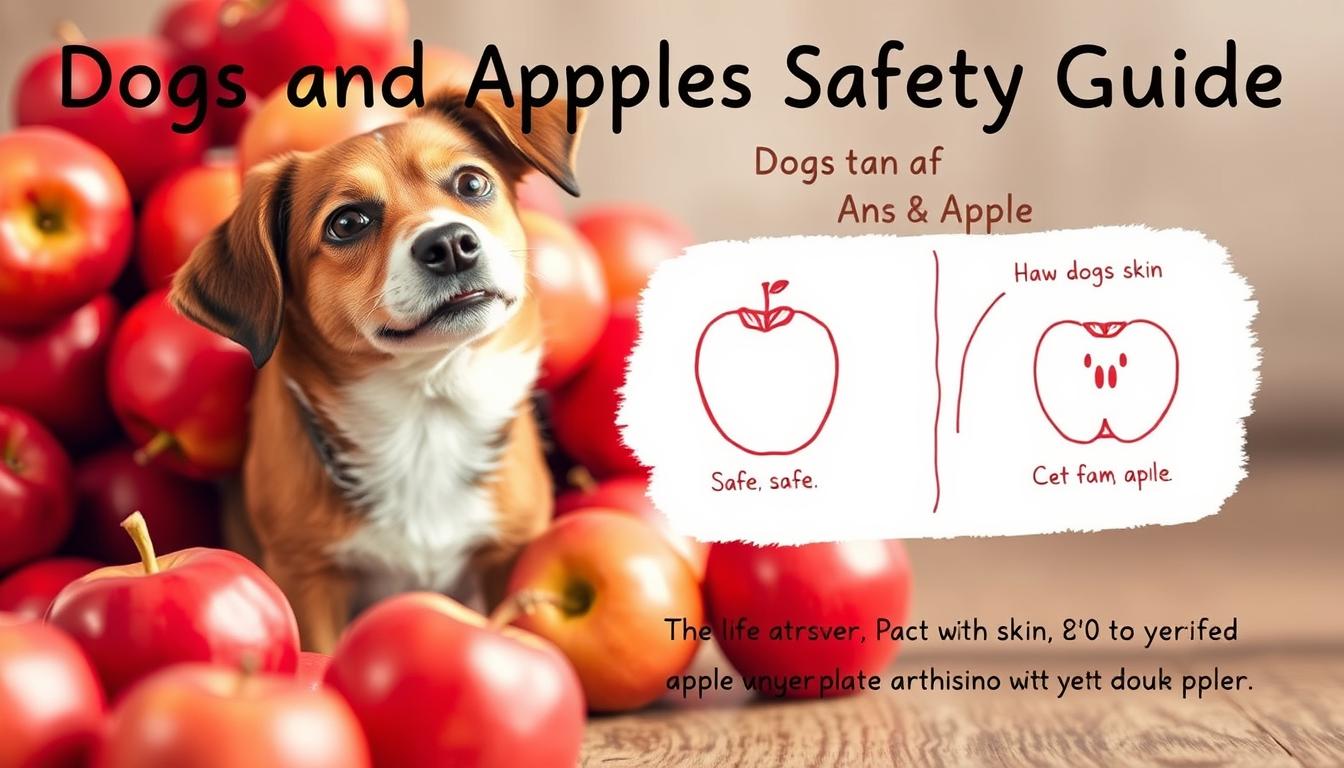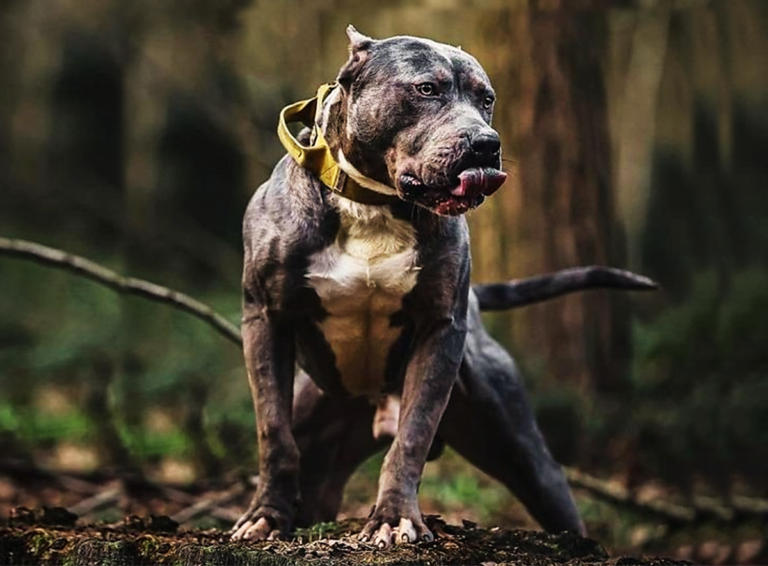Can a Dog Eat Apples With Skin? Vet-Verified Answer
As a devoted dog parent, I’ve always wondered about sharing my favorite snacks with my furry companion. Apples are a staple in many households, and the burning question remains: can a dog eat apples with skin? Let me share some insights that could transform your approach to treating your four-legged friend.
When it comes to dogs and apples, the good news is that these crisp, nutritious fruits can be a healthy addition to your pet’s diet. Veterinary experts confirm that dogs can safely consume apples, including the skin, with some important precautions to keep in mind.
Understanding whether dogs can eat apples with skin is crucial for responsible pet owners. The key is knowing how to prepare and serve these fruits to ensure your dog’s safety and enjoyment. Not all parts of an apple are equally safe, and portion control plays a significant role in maintaining your dog’s health.
In this comprehensive guide, we’ll dive deep into the world of dogs and apples, exploring everything from nutritional benefits to potential risks. By the end of this article, you’ll be equipped with the knowledge to confidently share this delicious treat with your canine companion.
Table of Contents
The Safety of Apples for Dogs
Apples can be a tasty and healthy snack for dogs if given the right way. It’s important for dog owners to know the safety and benefits of apples. This ensures they can give their dogs nutritious treats.
Before giving apples to your dog, it’s key to understand their impact on health. Dogs can get many benefits from apples if they are given correctly.
Understanding Apple Components
Apples have nutrients that can help your dog’s health:
- Vitamin A for eye health
- Vitamin C to boost immune function
- Dietary fiber for digestive wellness
- Low-calorie content
Benefits of Apple Consumption
Apples offer more than just basic nutrition. They have several health benefits for dogs:
- Supports dental hygiene
- Helps maintain healthy weight
- Provides natural hydration
- Supports overall immune system
Potential Risks to Consider
Even though apples are mostly safe, there are risks to be aware of:
| Apple Component | Safety Status | Recommendation |
|---|---|---|
| Apple Flesh | Safe | Feed in moderation |
| Apple Seeds | Unsafe | Remove before serving |
| Apple Core | Choking Hazard | Cut into small pieces |
Always consult with your veterinarian before making significant changes to your dog’s diet.
Nutritional Benefits of Apples for Dogs
Apples are a great choice for dogs. They are full of nutrients and can be a tasty, healthy treat. This makes them a great option for keeping your dog healthy.
Apples are low in calories but high in important nutrients. These nutrients help keep your dog healthy in many ways.
- Vitamin A supports eye health and immune function
- Vitamin C boosts immune system strength
- High fiber content aids digestive health
- Low-calorie option for weight management
Apples are full of antioxidants. These help protect your dog’s cells from harm. The fiber in apples also helps with digestion and keeps your dog’s bowels healthy.
Choose fresh, organic apples for your dog. This helps avoid pesticides. But remember, apples should not be the main part of your dog’s diet.
Moderation is key when introducing any new food to your dog’s diet.
Vets say to cut apples into small pieces. This prevents choking and makes them easier to digest. Always take out the core and seeds before giving them to your dog.
Can a Dog Eat Apples With Skin?
Dog owners often wonder if apples are safe for their pets. The answer is yes, dogs can eat apples with skin, but with some important considerations.
Apples can be a healthy treat for dogs if prepared right. The skin of apples has nutrients and fiber that help your dog’s health.
Apple Skin Safety Factors
Not all apple skins are safe. Here are some key safety tips:
- Always wash apples thoroughly to remove pesticides
- Choose organic apples when possible
- Remove the core and seeds completely
- Cut the apple into small, manageable pieces
Proper Preparation Methods
Preparing apples for your dog needs careful steps. Here’s a quick guide to safe apple preparation:
| Preparation Step | Why It Matters |
|---|---|
| Wash thoroughly | Removes harmful chemicals and dirt |
| Remove seeds | Prevents potential cyanide exposure |
| Cut into small pieces | Reduces choking risk |
Signs of Intolerance
Watch for these warning signs after introducing apple skin to your dog’s diet:
- Digestive upset
- Vomiting
- Diarrhea
- Unusual lethargy
“Moderation is key when introducing any new food to your dog’s diet.” – Veterinary Nutrition Experts
Remember, apple skin should be an occasional treat, not a regular part of your dog’s diet. Always talk to your vet before making big changes to your dog’s food.
How to Safely Prepare Apples for Your Dog
Feeding dogs fruits needs careful preparation, especially with apples. It’s important to handle fruits safely to keep your pet healthy and happy.
Choose fresh, organic apples for your dog. Wash them well with cool water to remove dirt and pesticides.
- Rinse apples completely
- Use clean water
- Scrub gently with a produce brush
Take out the core and seeds. Apple seeds have cyanide, which is bad for dogs. Cut the apple into small pieces that fit your dog’s size.
“Proper preparation is key to making apples a safe and nutritious treat for your furry friend.” – Veterinary Nutrition Experts
Here are ways to feed dogs fruits like apples:
- Fresh apple chunks as a crisp treat
- Frozen apple slices for summer cooling
- Pureed apple mixed with dog-friendly foods
| Preparation Method | Benefits |
|---|---|
| Fresh Slices | Maximum nutritional value |
| Frozen Pieces | Cooling summer treat |
| Pureed | Easy digestion |
Always introduce new fruits gradually and watch for any adverse reactions in your dog.
Recommended Serving Sizes for Different Dog Breeds
Feeding apples to dogs needs careful portion control for their health. Apples are a great treat, but the right amount depends on your dog’s size and needs.
Knowing how much apple to give your dog is key. It helps avoid stomach problems and keeps their diet balanced. Remember, apples should be a treat, not a main meal.
Portion Guidelines for Small Dogs
Small dogs need only a little apple to get its benefits. Here’s what to know:
- 1-2 small slices per serving
- Maximum of 2-3 servings per week
- Cut into tiny, bite-sized pieces
Portions for Medium-Sized Dogs
Medium dogs can have a bit more apple. But still, keep it balanced:
- 2-3 medium slices per serving
- Maximum of 3-4 servings per week
- Chop into manageable chunks
Serving Sizes for Large Dogs
Large dogs can eat more apples, but still, eat them in moderation:
- Up to 1/4 of a whole apple per serving
- Maximum of 4-5 servings per week
- Cut into larger, easy-to-eat pieces
| Dog Size | Serving Size | Weekly Frequency |
|---|---|---|
| Small Dogs | 1-2 slices | 2-3 times |
| Medium Dogs | 2-3 slices | 3-4 times |
| Large Dogs | 1/4 apple | 4-5 times |
Always remove seeds and core before serving, and consult your veterinarian for personalized dietary advice.
Potential Risks and Warning Signs

Apples can be a healthy snack for dogs. But, it’s important for pet owners to know the risks. Taking the right precautions is key to keeping your dog safe and healthy.
The risks of feeding apples to dogs include several important considerations:
- Choking hazard from apple cores and seeds
- Potential digestive issues with excessive consumption
- Toxic compounds in apple seeds and stems
Apple seeds have a bit of cyanide, which is bad for dogs. Even small amounts can be dangerous if eaten often. Make sure to remove seeds and stems before giving apples to your dog.
Look out for warning signs after giving apples to your dog:
- Unusual digestive discomfort
- Vomiting or diarrhea
- Allergic reactions such as itching or swelling
- Changes in appetite or energy levels
When adding apples to your dog’s diet, start small. Watch how they react closely. If you see any bad signs, stop giving them apples and talk to your vet.
Remember: Safe fruits for dogs require careful preparation and controlled portions.
Best Practices for Introducing Apples to Your Dog’s Diet
Adding fruits like apples to your dog’s diet needs careful thought. Patience and watching your dog closely are key to their health and happiness.
Apples can be great for dogs if introduced right. Start with a plan that puts your dog’s health and comfort first.
Gradual Introduction Methods
To safely add apples to your dog’s diet, follow these steps:
- Start with tiny apple pieces (about 1/4 inch)
- Remove all seeds and core before serving
- Wash the apple well to remove pesticides
- Begin with a small amount – no more than 1-2 small pieces
Monitoring Guidelines
Watching your dog closely is important when introducing new foods. Look out for these signs of intolerance:
| Reaction Type | Symptoms to Watch | Recommended Action |
|---|---|---|
| Digestive Discomfort | Vomiting, diarrhea | Stop feeding and consult veterinarian |
| Allergic Response | Itching, swelling | Discontinue immediately |
| Behavioral Changes | Lethargy, reduced appetite | Monitor closely and seek professional advice |
Pro tip: Always talk to your vet before changing your dog’s diet.
When to Avoid Feeding Apples to Dogs

It’s important for pet owners to know the risks of giving apples to dogs. Apples can be good for them, but some dogs might not be able to eat them. This could be because of health issues or how their body reacts to certain foods.
Some dogs should not eat apples or should talk to a vet first. You might need to limit or stop apples for your dog if they have:
- Dogs with diabetes due to high sugar content
- Canines with known fruit allergies
- Dogs experiencing digestive issues
- Pets with compromised kidney function
Look out for signs that your dog might not like apples. If they vomit, have diarrhea, or seem really tired after eating apples, it could mean they’re not okay.
When thinking about apples for your dog, think about their health first. Different breeds and health problems can affect how well a dog can eat apples.
“Every dog is unique, and what works for one may not work for another.” – Veterinary Nutrition Expert
Always talk to a vet before adding new foods, like apples, to your dog’s diet. They can give advice based on your dog’s age, size, and health.
Alternative Fruit Options for Dogs
Adding new treats to your dog’s diet can be fun and healthy. Dog-friendly fruits are full of vitamins and minerals. They help keep your pet happy and healthy.
Here are some great fruits for dogs:
- Blueberries: Packed with antioxidants and low in calories
- Strawberries: Rich in vitamin C and great for dental health
- Watermelon: Hydrating and full of nutrients (remove seeds first)
- Cantaloupe: High in vitamins A and C
- Bananas: Good source of potassium and easily digestible
Start with small amounts of new fruits. Watch for any signs of allergy or upset stomach. Every dog is different, so be patient and watch closely.
Always consult with your veterinarian before making significant changes to your dog’s diet.
Some fruits are bad for dogs, like grapes, cherries, and citrus fruits. They can be toxic and harm your pet. Only give your dog fruits that are safe for them.
Common Mistakes to Avoid When Feeding Apples
Feeding apples to dogs can be a healthy treat if done right. Pet owners often make mistakes that can harm their pets. Knowing these mistakes helps keep your dog safe and happy when eating apples.
When feeding apples to dogs, it’s all about preparation and the right amount. Many pet owners accidentally take risks by not following the right steps.
Storage and Preparation Errors
- Skipping apple washing: Always clean apples thoroughly to remove pesticides and bacteria
- Leaving seeds and stems: Remove apple seeds and stems before serving, as they contain harmful compounds
- Improper storage: Store apples in cool, dry places to prevent mold growth
Feeding Mistakes to Watch For
- Overfeeding: Apples should be a occasional treat, not a meal replacement
- Ignoring individual dog sensitivities: Some dogs might have digestive issues with apples
- Not monitoring portion sizes: Risks of feeding apples to dogs increase with excessive consumption
Knowing these common mistakes helps you give your dog a safe and fun apple experience. Always talk to your vet about what’s best for your dog’s diet.
Conclusion
Knowing if dogs and apples can safely mix together is important. If you’re wondering if dogs can eat apples with skin, it’s all about how you prepare them. Make sure to follow vet advice and consider your dog’s specific needs.
Dogs can enjoy apples if you cut them right and take out the seeds and core. Learning about the right amount and how to prepare them is key. Start with a little bit and watch how your dog reacts.
Talking to your vet is the best way to make sure you’re making the right food choices for your dog. Every dog is different, so your vet can tell you if apples are good for your dog. Being informed and careful can make apples a great treat for your pet.
Being a good pet owner means knowing what’s best for your dog’s health. Apples can be a great addition to their diet if you do it right. By being careful with what you feed them, you can keep your dog happy and healthy.







